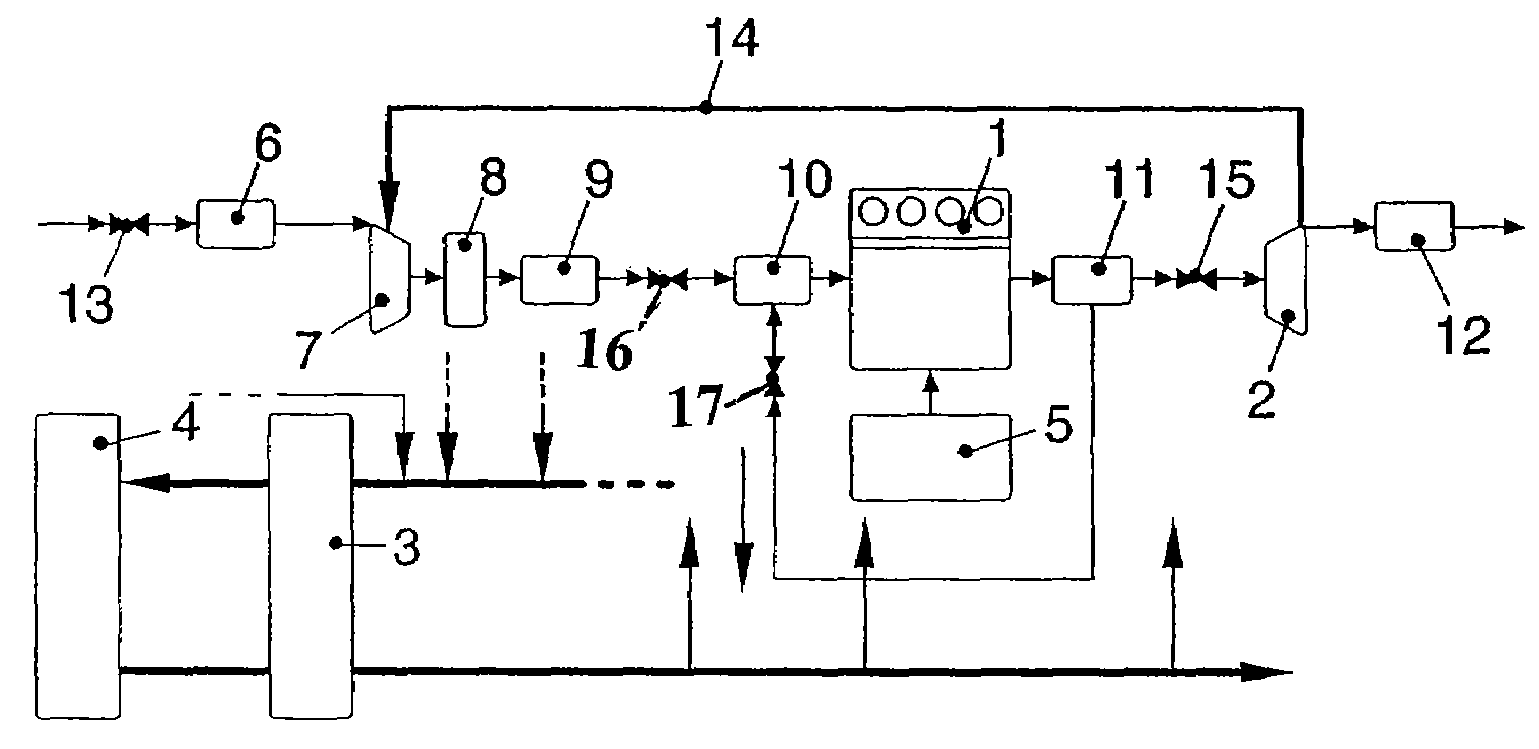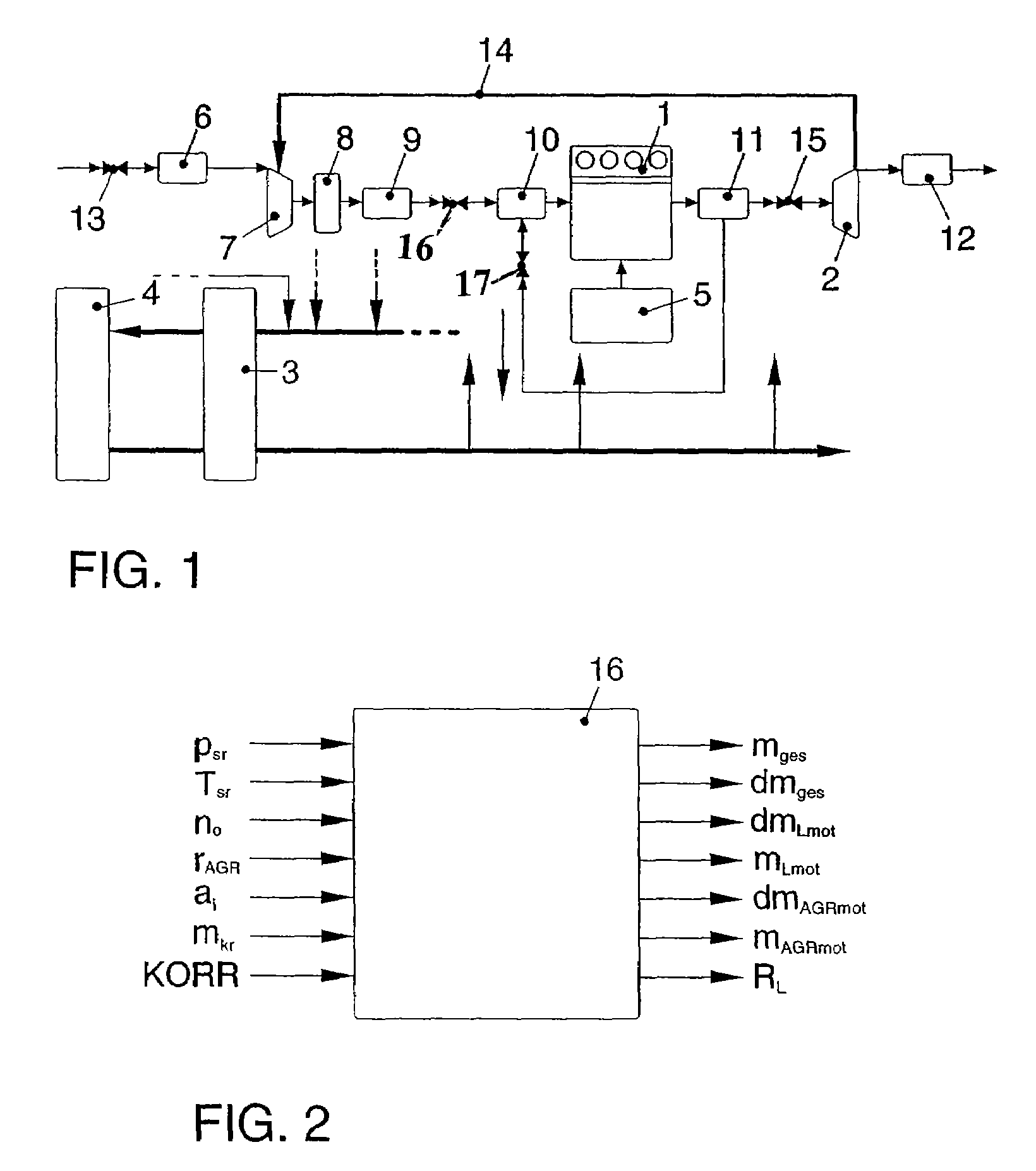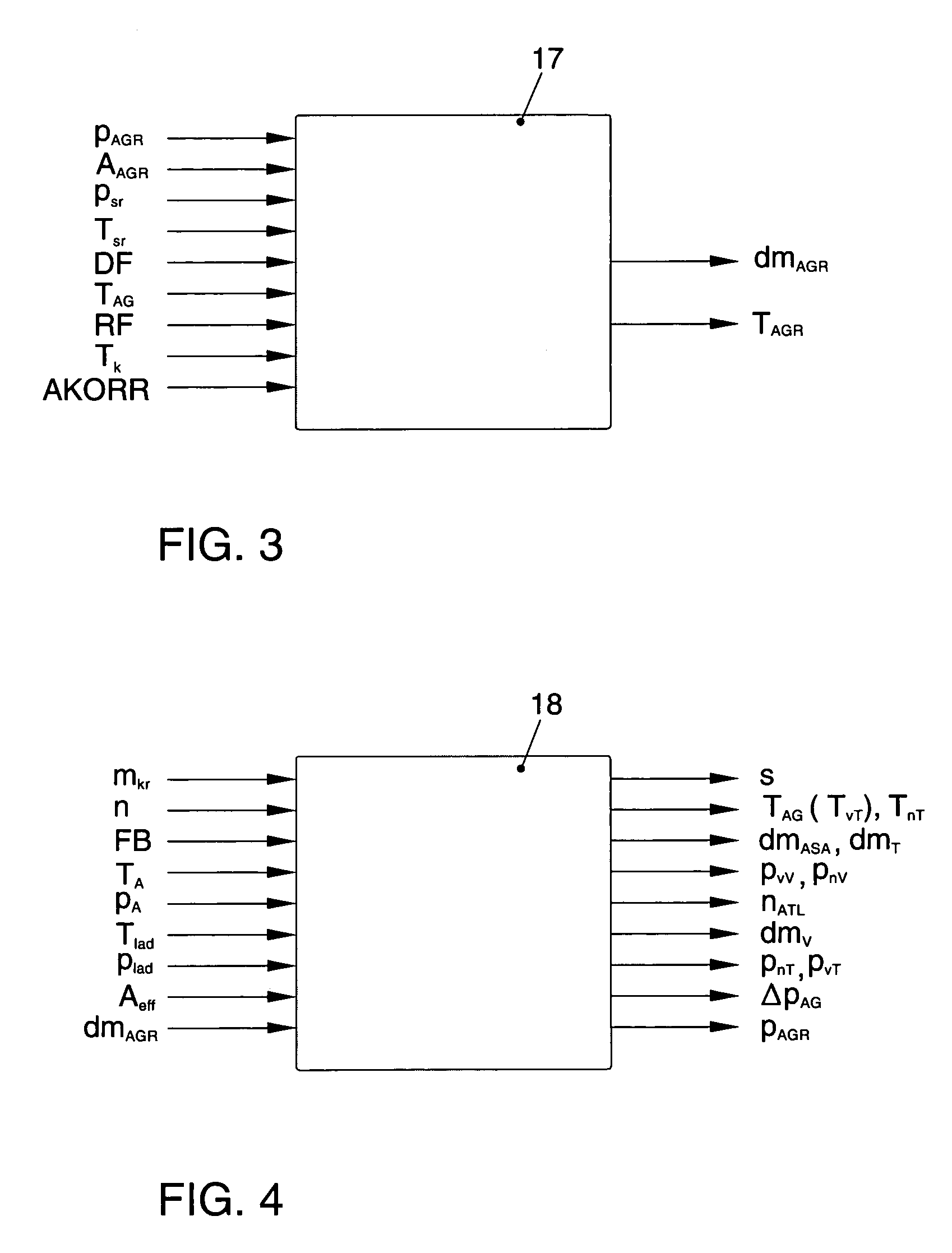Method for determination of composition of the gas mixture in a combustion chamber of an internal combustion engine with exhaust gas recirculation and correspondingly configured control system for an internal combustion engine
a technology of combustion chamber and gas mixture, which is applied in the direction of electrical control, process and machine control, instruments, etc., can solve the problems of inability to calculate the type of sensor signal used in the calculation of the exhaust mass situated in the combustion chamber, and the inability to determine the fresh air mass beset by errors
- Summary
- Abstract
- Description
- Claims
- Application Information
AI Technical Summary
Benefits of technology
Problems solved by technology
Method used
Image
Examples
Embodiment Construction
[0158]An internal combustion engine 1 with four combustion chambers or cylinders is shown in FIG. 1. The internal combustion engine 1 is coupled to an exhaust gas turbo-supercharger (ATL), which includes a turbine 2 and a compressor 7, in which the turbine and the compressor 7 are mounted on a common shaft, the so-called turbo-supercharger shaft 14. The turbine 2 uses the energy contained in the exhaust of the internal combustion engine 1 to drive the compressor 7, which takes in fresh air via an air filter 6 and forces pre-compressed air into the individual combustion chambers of internal combustion engine 1. The exhaust gas turbo-supercharger formed by turbine 2, compressor 7 and turbo-supercharger shaft 14 is only coupled to the internal combustion engine 1, in terms of flow, through the air and exhaust mass flow.
[0159]The air, admitted and pre-compressed by the compressor 7 via air filter 6, is fed via a charge air cooler (LLK) 8, which reduces the exhaust temperature and theref...
PUM
 Login to View More
Login to View More Abstract
Description
Claims
Application Information
 Login to View More
Login to View More - R&D
- Intellectual Property
- Life Sciences
- Materials
- Tech Scout
- Unparalleled Data Quality
- Higher Quality Content
- 60% Fewer Hallucinations
Browse by: Latest US Patents, China's latest patents, Technical Efficacy Thesaurus, Application Domain, Technology Topic, Popular Technical Reports.
© 2025 PatSnap. All rights reserved.Legal|Privacy policy|Modern Slavery Act Transparency Statement|Sitemap|About US| Contact US: help@patsnap.com



